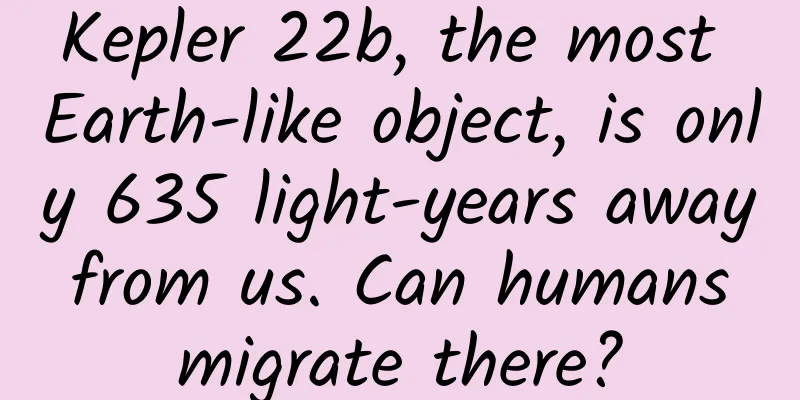Farewell to "Sophia": Observatories cannot rely solely on romantic feelings

|
What is the first thing that comes to your mind when you hear the name "Sophia"? A dignified and beautiful Eastern European girl? A passionate Spanish folk song? Or a Byzantine-style cathedral standing in Istanbul or Harbin? No matter which one it is, the name will definitely be associated with a hint of mystery and full of romance. In fact, the source of this romance is the perfect combination of a large jet and an infrared astronomical telescope - the Stratospheric Observatory for Infrared Astronomy, abbreviated as SOFIA, which means "Sophia". There is no doubt that behind all the romance and mystery is a moving story with twists and turns. NASA's SOFIA telescope Stunning debut Astronomers like to build telescopes on isolated, towering mountains, both to stay away from the "pollution" of city lights and to stand as high as possible in the Earth's atmosphere. Smoke, fog, water vapor and other aerosols will block light from reaching the ground, interfere with cosmic spectrum measurements, and thus weaken the quality of scientific observations conducted on the ground. Around 1965, NASA launched the Airborne Astronomy Program, which modified retired large jet aircraft, carried an observatory, and flew at an altitude of 12,500 meters. This would allow the telescope to operate above most of the water vapor in the Earth's atmosphere, obtaining a much wider infrared observation range than ground-based telescopes. Researchers believe that using an aircraft platform is more advantageous than satellites in space because aircraft can fly to any longitude and latitude on Earth to observe a particular event. After several test projects, the plan reached its climax - "SOFIA" was jointly established by NASA and the German Aerospace Center in 1996, and a 2.5-meter Cassegrain infrared telescope was carried on a Boeing 747 aircraft named "Lindberg Clipper". Because pointing the telescope directly at the sun will damage the optical equipment, "SOFIA" is only dispatched at night to perform astronomical observation tasks, and is also called "Jet Vampire". The most distinctive part of "Sophia" is the protruding section of the rear fuselage. The telescope is installed in the non-pressurized cabin of the aircraft, and a door about 4.37 meters wide and 5.74 meters high is opened on the left side of the aircraft as an observation window. NASA once proudly revealed that when the telescope door of "Sophia" was opened at an altitude of tens of thousands of meters, there was no additional vibration in the cabin; after the door was opened, the resistance increased greatly in theory, but in reality it only increased fuel consumption by 2%, which fully proved the excellent aerodynamic design of this door. On November 30, 2010, SOFIA began its first complete scientific research flight. Soon, it obtained data on the atmosphere of Jupiter, the Orion Nebula, and the galaxy M82. After it was officially put into operation in 2014, SOFIA's infrared equipment penetrated the dust in the galaxy, directly observed the formation of young stars, measured the galaxy's magnetic field, found traces of water on the sunlit side of the moon, and even detected the first molecule formed in the universe - helium hydride. In addition to ensuring free observation time and easy maintenance, the main reason why "Sophia" was able to be established is two words - saving money. Compared with space telescope projects that often invest billions of dollars, "Sophia", which only invested a few hundred million dollars in the early stage, is a great value for money. The behavior of modifying second-hand aircraft and working with foreign research institutions seems to have taken "careful budgeting" to the extreme. But as "Sophia" was further put into use, everyone suddenly found that the "jet vampire" gradually became a "capital vampire". Left: The Stratospheric Infrared Observatory in flight. Right: Inside the cabin, scientists responsible for operating the telescope and analyzing data sit at the rear of the cabin SOFIA usually flies from NASA's base in Palmdale, California, carrying a team of scientists and technicians to observe the sky for 8 to 10 hours every night. Occasionally, it will migrate to New Zealand to study targets in the southern sky, such as the center of the Milky Way. SOFIA conducts about 100 missions each year, each costing nearly $1 million. The United States provides $85 million for the project each year, and Germany provides $20 million. It is second only to the Hubble Space Telescope and is the second most expensive operating mission in astrophysics. As the most famous space telescope, the Hubble Space Telescope has a very impressive scientific output. From 2014 to 2019, the first six years of SOFIA's operation, the Hubble Space Telescope helped the scientific research team publish more than 900 scientific papers. SOFIA's funding is close to that of the Hubble Space Telescope, and its scientific output "should" be no less impressive, but the result is disappointing. In 2019, NASA found that SOFIA did not produce a large number of frequently cited results. Also from 2014 to 2019, it only helped the research team publish 178 scientific papers, an average of only 21 papers per year, ranking second to last in a list that includes 29 ground-based telescopes and the Hubble Space Telescope. As for influence, measured by the number of paper citations, SOFIA ranks last and can be said to be the least efficient telescope in the world. The report also revealed that SOFIA managers tried to maximize the time spent observing, so much so that it launched too many observing projects, many of which were never completed. During SOFIA's operation, only 40% of proposals designated as high priority were eventually completed. Because of its "high cost and low output", SOPHIA is almost always the first project to be suspended in the US federal science budget. At this time of year, SOPHIA will be shut down and put into storage, anxiously waiting for its future fate. Of course, similar problems are not limited to SOFIA. In the 2023 U.S. federal budget request submitted in March this year, projects such as the Mars Ice Mapper project, the Perseverance rover Mars sample return mission, the near-Earth object exploration mission, and the Nancy Grace Roman Space Telescope were either suspended or postponed. Recently, the news that was both unexpected and expected finally came: NASA and the German Aerospace Center announced that they would permanently close "Sophia". The romantic journey of this airborne horizontal infrared observatory, which was planned to operate for 20 years, came to an abrupt end in its eighth year. The story of "Sophia" tells us: As a large scientific device, even if it has a romantic sentiment that is enough to shock the universe, if it cannot make sufficient contributions at the scientific level, its ending can only be tragic. |
<<: After the white sturgeon, will the “mermaid” also leave?
>>: 3 incorrect charging habits will speed up the battery's failure! Check yourself →
Recommend
Berg Insight: Global mobile M2M users to reach 265.2 million in 2015
Berg Insight, a Swedish research institute specia...
Levi Flying: Common "Moving" Techniques Used by Flies
As the temperature rises, flies become more activ...
How can corporate network promotion acquire customers through Baidu Tieba?
Different online promotion methods generally have...
What are the unknown rules and tricks in Baidu bidding?
Baidu bidding is a good thing. It can be said tha...
Growth Hacker's Guide: How to Improve User Retention
If you still invest huge budgets to attract new c...
In-depth practical information | The most comprehensive guide to 360 information flow advertising is online
“How do I optimize my account?” “How to solve the...
Bird population census: AI has started to check the bird population!
According to statistics from the World Wildlife F...
If you see these creatures on the beach, don't touch them!
Many people like to go to the beach for fishing o...
With wireless charging coming, will iPhone 8 still come with a data cable as standard?
Recently, it has been widely rumored that Apple wi...
When Ideal executives beat up Shanhaijing-style self-development, the industry's desire for technology premium has become unbearable
The day before yesterday, Ideal Auto executive “O...
HTML5 Mobile Design Basics
Desktop website design is mostly fixed layout or ...
After two years of struggle, the paper is finally published: How to overcome topological defects in quantum simulators?
After two years of fighting wits with reviewers, ...
Analysis of Xiaohongshu Enterprise Account Operation (Food Edition)
This article analyzes the operation of Xiaohongsh...
How can communities attract traffic and realize monetization at zero cost?
Recently, many community operation partners have ...
A comprehensive review of brand marketing during the Lunar New Year Festival | Tmall, JD.com, Suning, Vipshop, and NetEase Yanxuan
Having survived Double 11 and Double 12, it’s tim...









